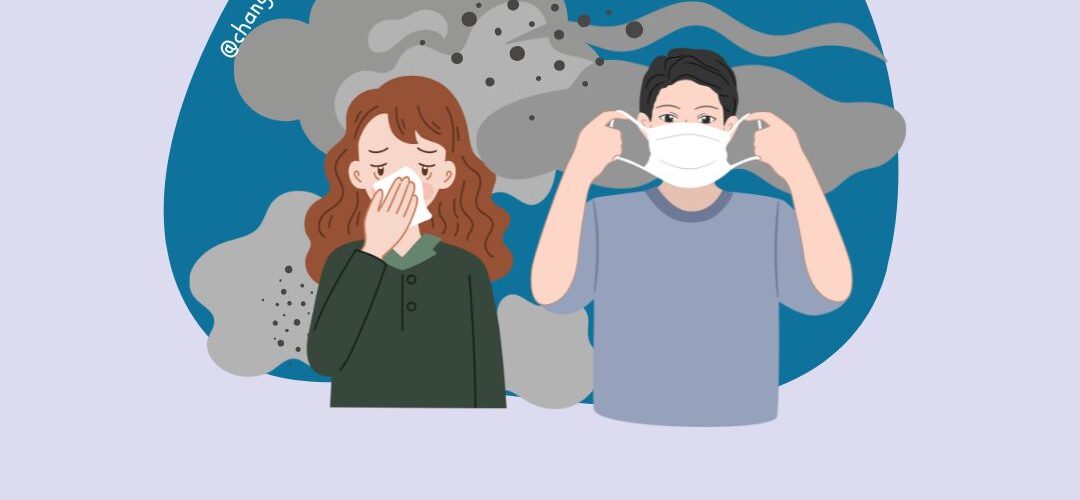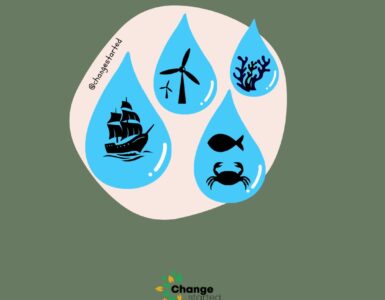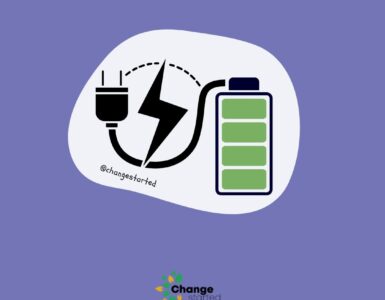The air we breathe is fundamental to life, yet for millions worldwide, each breath is a risk.
Air pollution can be defined as the contamination of air by substances that change the atmosphere’s natural characteristics. It can be caused by natural or manmade substances and can occur both indoors and outdoors.
Air pollution, an invisible threat, casts a long shadow over human health and the natural world. From respiratory illnesses and cardiovascular diseases to acid rain and climate change, the consequences of air pollution are far-reaching and devastating.
This article explores the multifaceted impact of air pollution, examining its detrimental effects on both human health and the natural world, and highlighting the urgent need for effective solutions
The Link between Air Pollution and Health

Millions of people reside in areas where urban smog, particulate matter, and toxic pollutants create serious health risks.
Air pollution can trigger and worsen a range of respiratory conditions. For instance, pollutants such as ozone, particulate matter, and nitrogen dioxide can irritate the airways, precipitating asthma attacks characterized by wheezing, coughing, and shortness of breath.
Prolonged exposure to air pollution can also contribute to the development of Chronic Obstructive Pulmonary Disease (COPD), a progressive lung disease that increasingly impairs breathing. Furthermore, several air pollutants elevate the risk of lung cancer and can compromise the immune system, increasing vulnerability to respiratory infections such as pneumonia and bronchitis.
Fine particulate matter can enter the bloodstream and contribute to several serious conditions. For example, pollutants can trigger inflammation and oxidative stress, increasing the risk of blood clots and subsequent cardiovascular events such as heart attacks and strokes.
Long-term exposure to air pollution has also been linked to hypertension or elevated blood pressure. Additionally, air pollution can exacerbate pre-existing heart conditions and contribute to the development of heart failure.
Emerging research suggests links to a range of other health issues. For instance, studies indicate a potential link between air pollution and neurodegenerative diseases such as Alzheimer’s and Parkinson’s.
Exposure to air pollution during pregnancy can also have adverse effects on fetal development, including low birth weight and premature birth. Furthermore, some studies suggest a correlation between air pollution and an increased risk of developing type 2 diabetes.
The Environmental Cost of Air Pollution
Beyond its detrimental effects on human health, air pollution also inflicts environmental consequences.
Acid Rain
Acid rain is a form of precipitation that contains harmful concentrations of nitric and sulfuric acids. These acids primarily originate from nitrogen oxides and sulfur oxides released into the atmosphere during the combustion of fossil fuels.
Environmentally, acid rain damages trees acidifies soils and water bodies—rendering them uninhabitable for certain fish and other wildlife—and accelerates the deterioration of buildings, statues, and sculptures.
Impact on Biodiversity
Eutrophication describes a condition in water bodies characterized by excessive nutrient concentrations, particularly nitrogen, which results in algal blooms. These blooms can subsequently lead to fish kills and a decline in plant and animal biodiversity.
Haze
Haze occurs when sunlight interacts with microscopic pollution particles suspended in the air. This interaction reduces visibility, obscuring the clarity, colour, texture, and form of distant objects.
Some haze-forming pollutants, primarily fine particulate matter, are directly emitted into the atmosphere from sources like power plants, industrial facilities, vehicles, and construction sites. Others are created secondarily when emitted gases, such as sulfur dioxide and nitrogen oxides, transform into particles as they are transported downwind.
Impact on Wildlife
Air pollution’s impact extends to wildlife, as toxic pollutants present in the air or deposited on land and water can have various detrimental effects. Similar to humans, animals exposed to sufficient concentrations of airborne toxins over time can experience health problems.
Research indicates that these toxins contribute to birth defects, reproductive failures, and diseases in animal populations. Persistent toxic air pollutants, those that degrade slowly in the environment, pose a particular threat to aquatic ecosystems.
Wrapping Up
While air pollution affects everyone, certain populations are particularly vulnerable to common pollutants like particulate matter and ground-level ozone. This group includes children, older adults, individuals who spend significant time outdoors, and those with pre-existing heart or lung conditions, such as asthma.
It is, therefore, crucial to be aware of protective measures one can take to safeguard their health.
The impact of air pollution, while significant, is not insurmountable. Addressing this global challenge requires several strategies and concerted efforts at individual, local, national, and international levels.
The world has shown that if efforts are made the impact of air pollution can be curbed. In 1987, the Montreal Protocol played a significant role in reducing air pollution, especially in the form of man-made chemicals like chlorofluorocarbons (CFCs), halons, and other ozone-depleting substances.
Reducing emissions from transportation, improving industrial practices through stricter emissions regulations and the adoption of cleaner technologies can significantly reduce pollution from industrial sources.
Individuals in big cities can take action by using bicycles, and public transport, and adopting electric vehicles to reduce their carbon footprint, which will further help to reduce the effects of air pollution.
Investing in renewable energy sources can decrease reliance on fossil fuels and further mitigate air pollution. Promoting energy efficiency and enforcing air pollution regulations are crucial for identifying pollution hotspots and ensuring accountability.
Finally, raising public awareness about the health and environmental impact of air pollution can empower individuals to make informed choices and take action to reduce their contributions to the problem.






Add comment